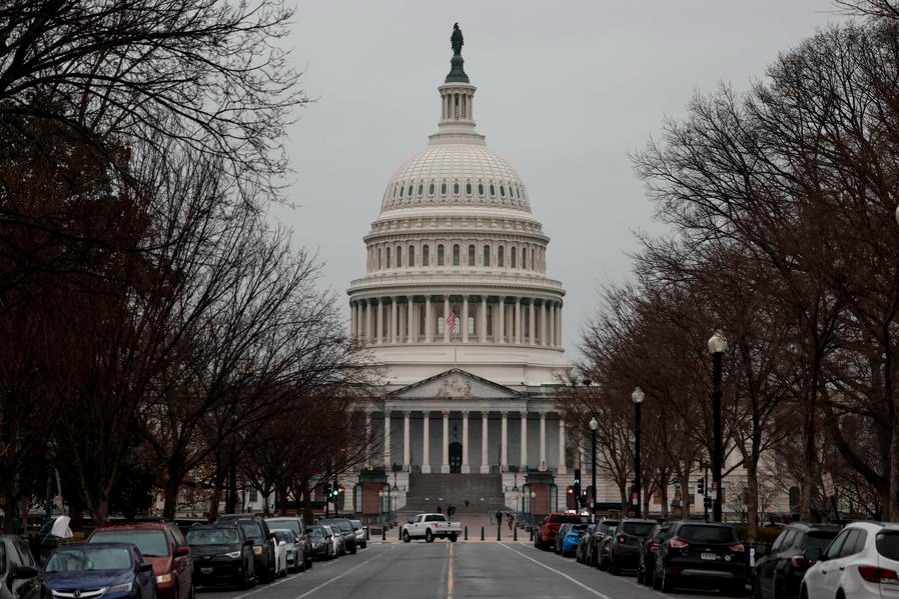US Space Force step toward militarizing of space


US President Donald Trump observes a demonstration with US Army 10th Mountain Division troops as he visits Fort Drum, New York, US, Aug 13, 2018. [Photo/Agencies]
After officially proposing a United States Space Force in June 2018, as the sixth branch of the US military, US President Donald Trump signed into law the John S. McCain National Defense Authorization Act for Fiscal Year 2019 in August to reestablish the US Space Command, which will later be separated from the US Strategic Command as a fully unified combatant command.
The Trump administration wants to create the Space Force as a separate military command to ensure the US continues to enjoy its military and other strategic advantages over other countries, especially China and Russia, according to three US reports in the past two months.
The US National Intelligence Strategy report, issued last month, says: "Russia and China will continue to pursue a full range of anti-satellite weapons as a means to reduce US military effectiveness and overall security". This claim was reiterated in the Worldwide Threat Assessment, which says: "China and Russia are training and equipping their military space forces and fielding new anti-satellite weapons to hold US and allied space services at risk".
And the US Missile Defense Review, the first since 2010, indicates the possibility of the US establishing a space missile defense system.
The development of Russian and Chinese space technology has raised US concerns. China has achieved remarkable progress in fields such as space vehicles, satellite launches, manned space flight, and anti-satellite and sensor technologies making it a leading player in aerospace technology and equipment.
According to the Blue Book of China Aerospace Science and Technology Activities, in 2018 China launched the second-highest number of spacecraft.
The resultant pressure the US faces at home and abroad prompted it to release the reports claiming China and Russia pose a threat to US space systems, and the US risks falling behind the two countries in space technology.
On Feb 11, the Challenges to Security in Space report issued by the US Defense Intelligence Agency claimed Russia and China "have developed robust and capable space services" and "to monitor, track and target US and allied forces", which was different from the Pentagon's previous wording that Russia and China are striving "to catch up with the US".
As a leader in space technology, the US has been vigilant against other countries developing space technology so as to maintain its dominance in the field.
But the superpower with the world's largest armed forces, 374 Marine and Air Force bases in about 140 countries has been facing increasing challenges, particularly from China and Russia, in cutting-edge military technology, for example, hypersonic weapons. Therefore, the US wants to extend the battlefield to space and accelerate space militarization.
Since space weapons can be used against real-time targets, the US wants to continue dominating space technology-of the about 1,000 satellites in space, for example, 593 belong to the US. The US has spent more money than any other country on developing space weapons and its latest posture could spark a global arms race in space.
Many countries have military equipment in space, mostly navigation and communication satellites, which can also help trace enemy planes, take photographs and control missiles.
But the US is determined to remain the strongest military power in space. It appears therefore that Trump's proposal to establish the Space Force will greatly benefit the US industry. By exaggerating the space threat as well as promoting the militarization of space, the US aims to build another lucrative sector for its military industry as it knows other countries will be compelled to buy US arms, which can help consolidate the US' dollar hegemony.
The authors are researchers at the National Defense University of the People's Liberation Army.

































